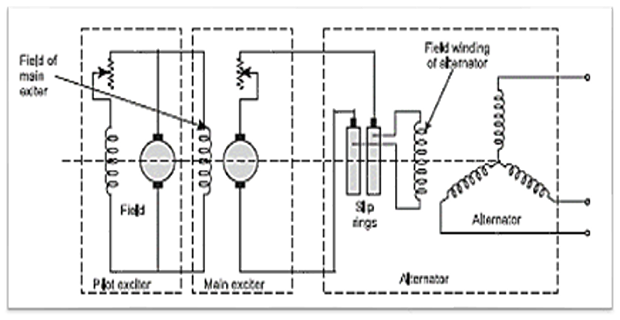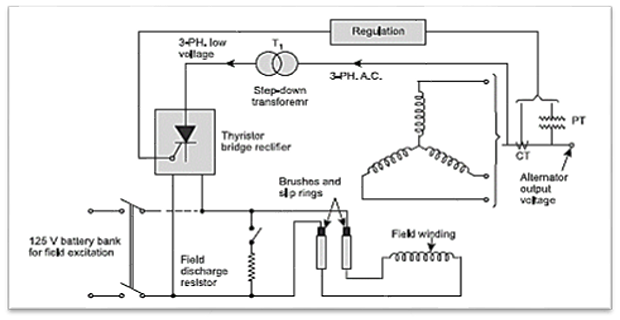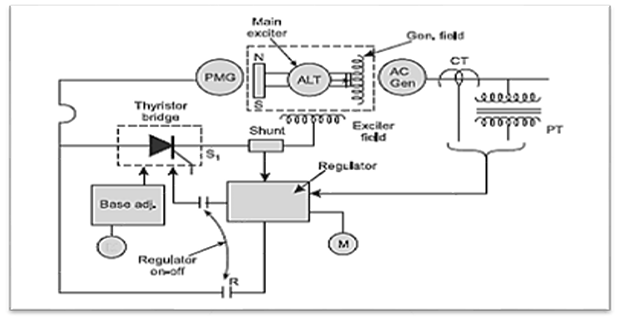DC Exciters:
Conventional method of exciting the field windings
Three machines namely pilot exciter, main exciter & the main 3-phase alternator are mechanically coupled and are therefore, driven by the same shaft.
The pilot exciter is a DC shunt generator feeding the field winding of a main exciter.


